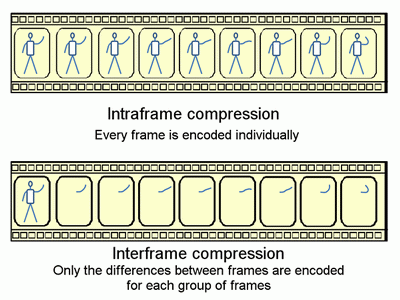Posted by Jason Dunn in "Digital Home Articles & Resources" @ 06:00 PM
"Video requires huge amounts of bandwidth. In Europe, regular TV - or ‘standard definition' (SD) - operates at a resolution of 720 x 576 with 25 frames per second. Using 24-bit colour, that equates to about 30MB/sec of data. So, long before high definition arrived, video data rates were already well beyond what most consumer hardware could cope with. Encoding-decoding algorithms, or codecs, were an absolute necessity for the digital video revolution we've been enjoying for a decade or more. Broadly speaking, codecs are either ‘intraframe' or ‘interframe'. Intraframe means that each frame is treated as a separate still image and compressed only with reference to the pixels contained in that frame. Interframe compression, on the other hand, records the differences between successive frames and an initial keyframe. This allows smaller overall file sizes than with the intraframe method, as areas of the frame which remain static can be greatly compressed."
Deeply-technical codec talk tends to put almost anyone to sleep, but
this article over at TrustedReviews has been written to be fairly understandable - well, ok, about as understandable as a codec article can be.
Part two continues with explanations of h.264, MPEG4, and other video compression techniques. Worth reading if you want to understand the "why's" behind the compression of today's videos.













